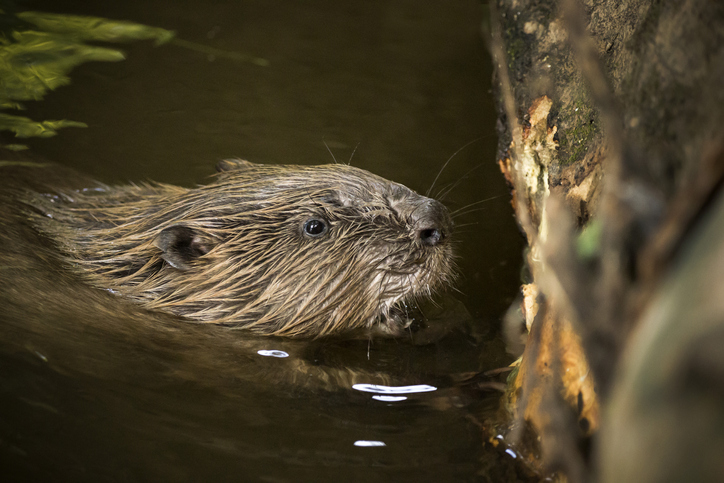A total of 63 beavers were killed under licence in Scotland last year, down from 87 the previous year.
A new report by NatureScot has also revealed 45 animals were trapped and moved to licenced projects, compared with 33 in 2021. Of these, 15 beavers were released to the wild.
The Scottish Government welcomed the figures and said beaver numbers are increasing at a “healthy rate” but “more work” is required.
The National Farmers Union (NFU) Scotland claimed farmers and crofters will be “alarmed” at figures projecting an expansion in the beaver population to 10,000 by the end of the decade. It called for people to be compensated by beaver damage to land.
Beavers were hunted to extinction in Scotland in the 16th century. After prolonged arguments, as reported by The Ferret, the Scottish Government gave beavers legal protection in May 2019.
We’re pleased to report a significant increase in trapping last year. As this work continues, we expect to see a further shift away from lethal control
Donald Fraser, NatureScot’s head of wildlife management.
Since then in order to kill them, land managers have had to obtain a licence from NatureScot.
There was angry criticism in 2021 when The Ferret reported 115 beavers had been shot in Tayside alone.
Wildlife campaigners condemned the killings then as “ecologically incoherent and environmentally irresponsible”.
It also notes the past 12 months saw publication of Scotland’s Beaver Strategy, which brought together more than 50 organisations and individuals with an interest in beaver restoration and management.
The Scottish Beaver Advisory Group has now been established to take the strategy forward.
Donald Fraser, NatureScot’s head of wildlife management, said: “We’re pleased to report a significant increase in trapping last year, with NatureScot staff working hard with land managers, the Beaver Trust and the Five Sisters Zoo to enable this wherever possible. As this work continues, we expect to see a further shift away from lethal control.”
He added: “The release of beavers at a new site at Loch Lomond earlier this year marked a significant milestone in the restoration of the species, with two other proposals for the River Spey and Glen Affric/ Beauly areas currently being explored.”
Lorna Slater MSP, Scotland’s biodiversity minister, said: “It is welcome news to see the increase in the proportion of beavers being translocated and that numbers in Scotland are increasing. It is vital that we continue to protect and value these iconic animals.”
NFU Scotland president Martin Kennedy said the union would continue to work with all parties going forward to ensure that damage to productive farmland is prevented.
“Beavers in the wrong areas are proven to cause significant and costly agricultural damage so where mitigation and trapping measures fail, dam removal and lethal control must remain an option to prevent serious agricultural damage before it occurs,” he added.
Beavers in the wrong areas are proven to cause significant and costly agricultural damage so where mitigation and trapping measures fail, dam removal and lethal control must remain an option to prevent serious agricultural damage before it occurs.
Martin Kennedy, president of national Farmers Union Scotland.
Kennedy also argued that, given the rapid expansion in beaver numbers, the Scottish Government must ensure that a “fully funded standalone mitigation scheme” can be accessed by all who wish to prevent beaver damage on their land.
There should be a “fully funded compensation scheme” for those who have been adversely affected, Kennedy continued.
Steve Micklewright, chief executive of Trees for Life, said: “These figures from NatureScot show an upward trend in the number of beavers being relocated to biodiversity boosting projects in preference to being lethally controlled. We need to keep going in this direction by preparing more places in Scotland where nature and people can benefit from beavers, with NatureScot’s well-planned management in place if needed.”
This article was updated at 15.37 on 12 June 2023 to add a comment by Trees for Life.
Photo credit: iStock and Cavan Images.














